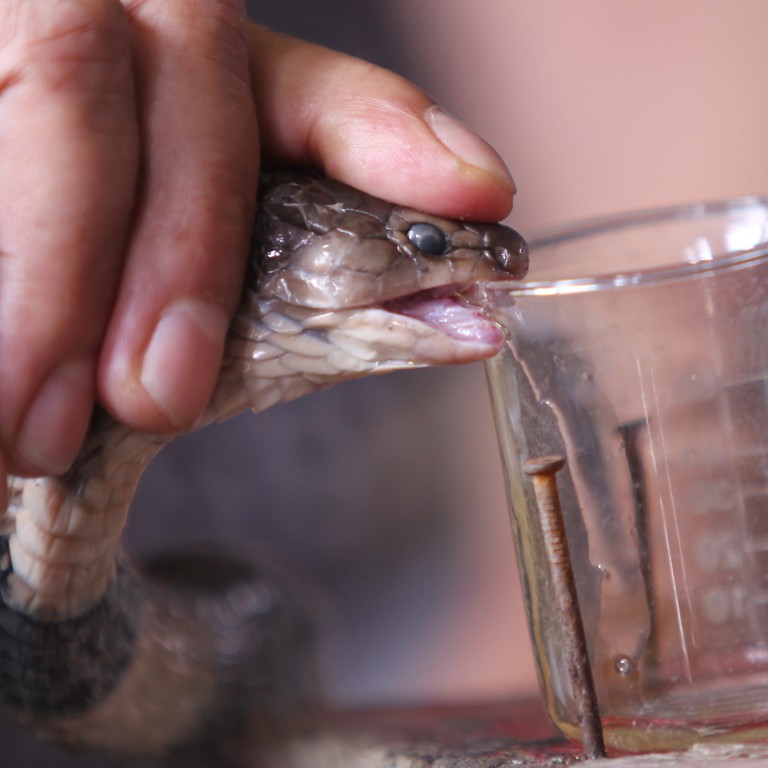
Chinese scientists use yeast to brew blood clot fighting snake venom like beer
By inserting the genes of a poisonous snake into yeast, mainland Chinese scientists were able to mass produce blood clot fighting venom for the first time.
The artificial venom contains a precious protein that could prevent clotting in blood vessels and save many lives, the team said in a study published in the journal Scientific Reports.
“We encountered lots of challenges. Transferring the gene from one species to another is easy, but to keep the new species alive and useful is extremely difficult,” said professor Xiao Weihua, lead scientist of the project at the University of Science and Technology of China in Hefei, told the South China Morning Post.
The venom production genes came from Agkistrodon acutus, a pit viper with a large, triangular head. The snake is called the “five pace” snake in some parts of China because locals believe its poisonous bite could knock out a person within a few steps.
Xiao’s team took two genes from the serpent and inserted them at a few “mutation-friendly” sites in the chromosome of Pichia pastoris, a microorganism commonly used in the fermentation process for food and drinks.
The yeast with snake genes was cultured at room temperature and fed with glycerol, a sweet-tasting compound that can also be used to make explosives. After about 18 hours, the scientists injected methanol into the test tube, and the yeast was stimulated to convert the glycerol into snake poison proteins.
“Don’t worry, they don’t bite,” said Xiao in response to the Post's query about the safety of the technology.
The genetically modified yeast has passed bio-safety checks by the Chinese authorities and would not cause any harm in contact with humans, he said.
Xiao said that the yeast is more or less the same as that used in bread and wine, only when bathed in glycerol could it produce the venomous protein.
Xiao said the team was working with a medical company in Hefei to overcome the last technological hurdles and bring the snake venom to mass production. At present, the yeast dies after producing the venom continuously for 38 hours, meaning that new colonies must be added frequently to maintain production.
Agkisacutalin, a protein found by Chinese scientists in the "five pace" venom, can reduce the formation of blood clots in humans, a cause of numerous ailments such as strokes and heart failure.
“The biggest value of Agkisacutalin is the near-absence of side effects,” Xiao said.
“All anticoagulant medicines at present lead to excessive bleeding, but Agkisacutalin doesn’t.”
Though the venom protein has been proven effective in clinical trials for years, its use in medicine had not been approved by the authorities due to safety concerns regarding natural venom.
Mass production would also require lots of snakes, many species of which are already endangered in China.
Chinese researchers had tried to synthesise the snake venom with chemical methods but the attempts all failed due to the difficulty of building the delicate structure of the protein in chemical reactions.
Xiao said their team was not only using the yeast method to produce snake venom, but other sophisticated proteins produced by animals, with the hope to develop new drugs to fight diseases such as cancer.

